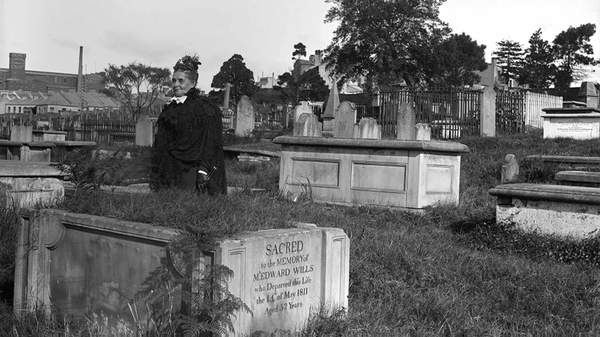Overview
On a standard visit to Sydney's Central Station, you're likely too busy dodging fellow commuters or rushing for your train to really give much thought to its past. But, in fact, the bustling CBD hub boasts quite the dark and eerie history: it once home to the city's first major colonial-era cemetery. And now you can dig even deeper into the unsavoury stories of that era, thanks to gripping new local podcast The Burial Files. True crime buffs, grab your headphones — this'll be right up your alley.
The State Library of NSW curator Elise Edmonds has been busy diving into the colourful history of the Devonshire Street Cemetery, chatting to leading historians, archaeologists, forensic experts and railway enthusiasts to create her six-part audio series. You'll hear tales of mischief, madness and questionable activities, grim accidents and scandalous crimes, glimpsing into the lives of some of the 30,000 residents that were buried here between 1820 and 1900.
The one-time burial ground was deemed overcrowded by 1860 and finally abandoned in 1867, with (most of) the remains exhumed in 1901 to make way for the site's next use. In The Burial Files, you'll discover the history behind the exhumations, as well as the building of Central Station, from humble tin shed to the grand stone structure it is today.
Along with the podcast, the sketchy stories of the Devonshire Street Cemetery and the surrounding parts of old Sydney have also spawned a new exhibition at the State Library of NSW. Dubbed Dead Central, it's brought to life through a 35-minute audio recording and curation of historic photographs.
The first two episodes of The Burial Files are available now to download and stream from your favourite podcast platform. Further episodes will be released in the coming weeks.
Dead Central is showing at the State Library of NSW until November 17.
